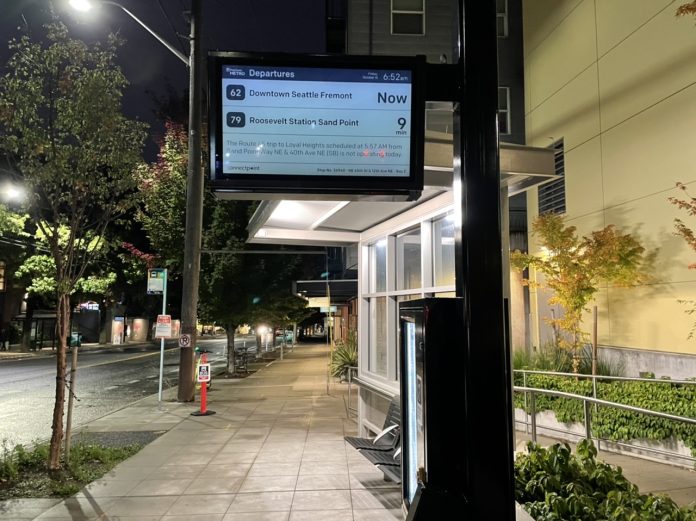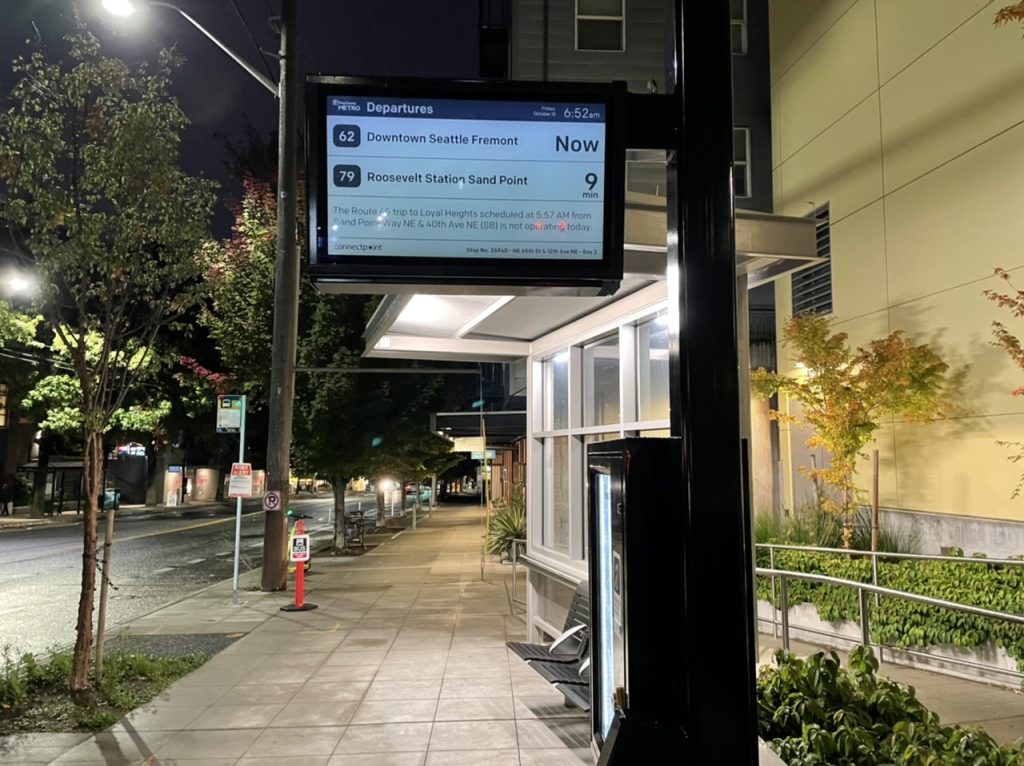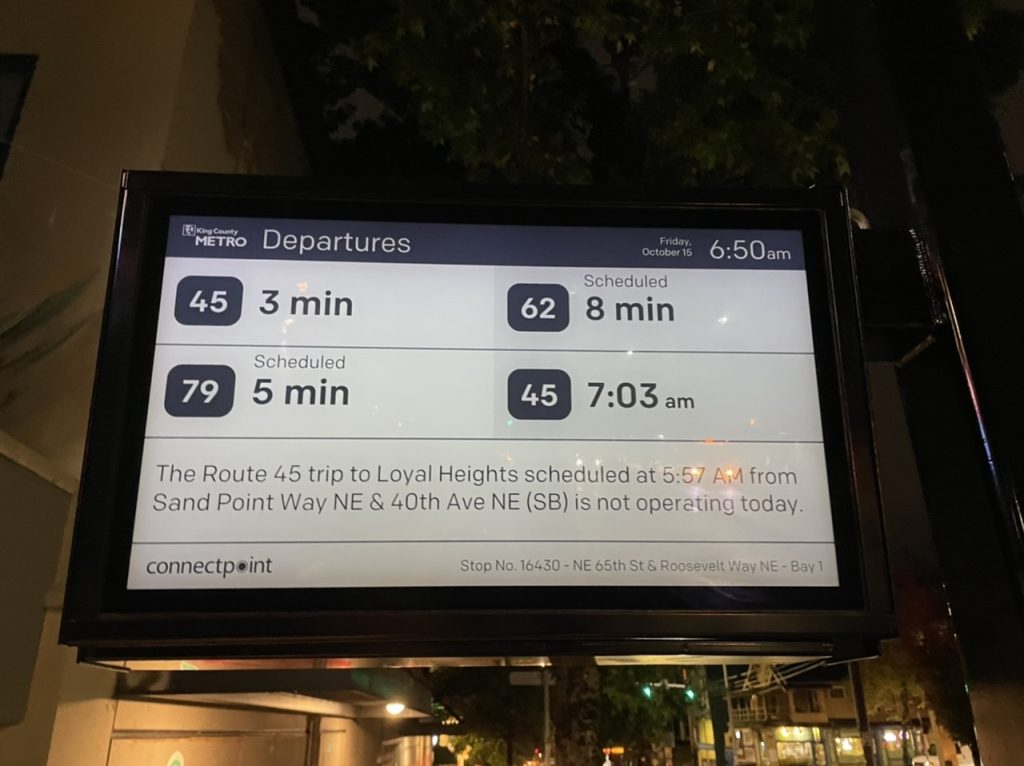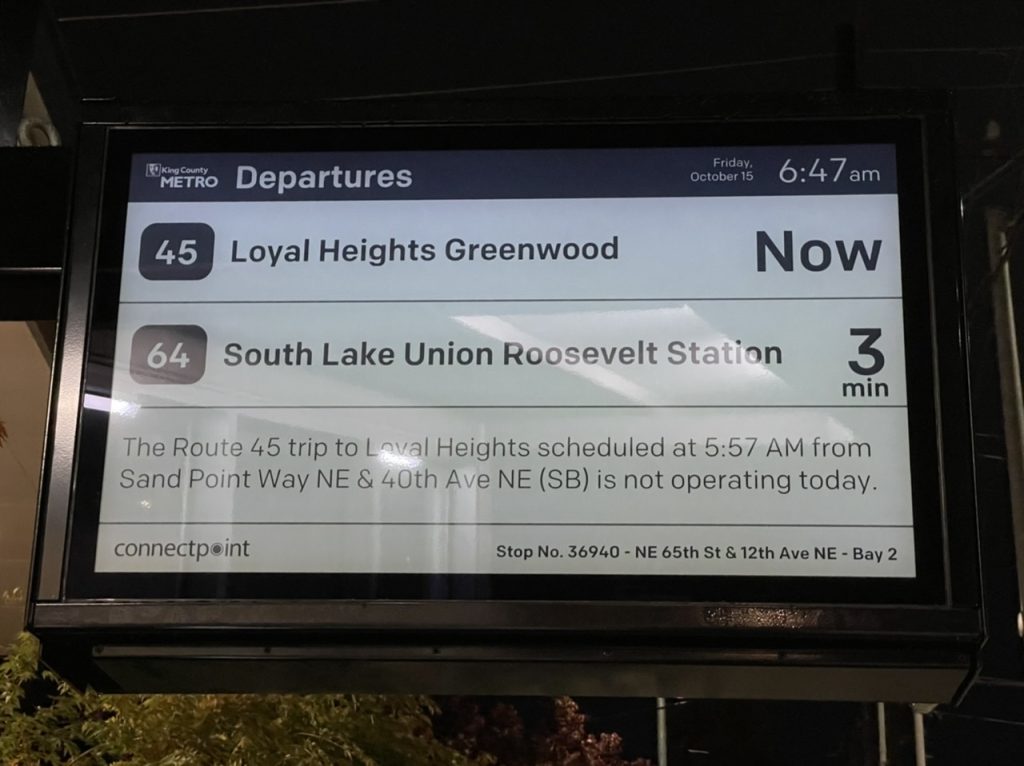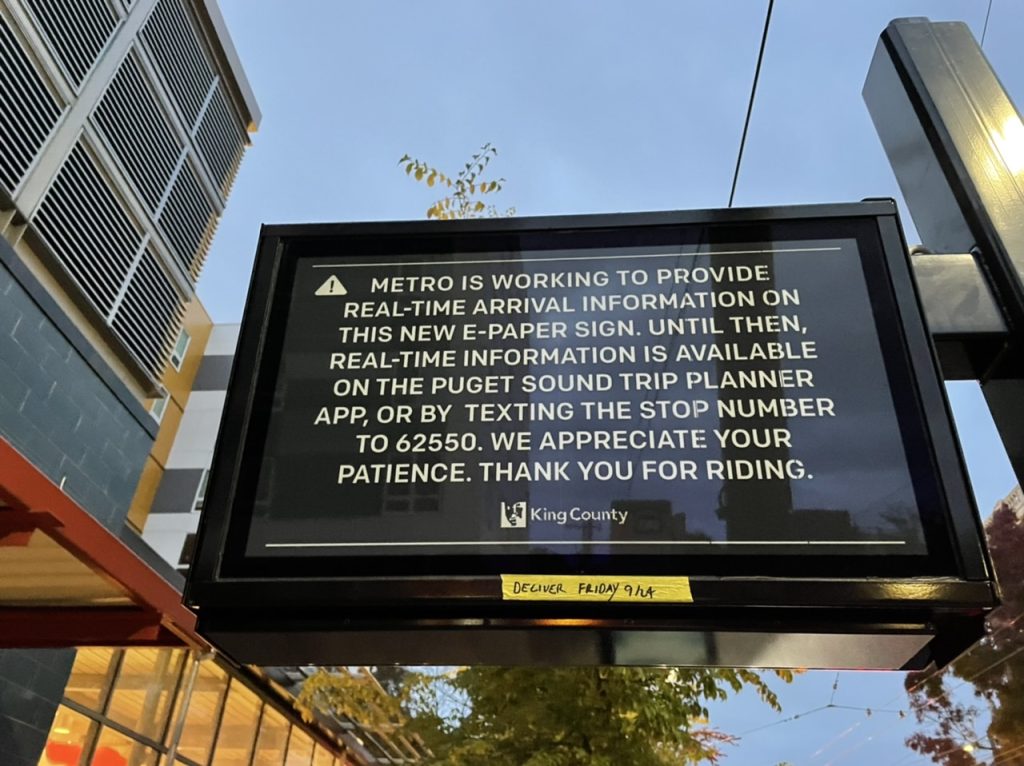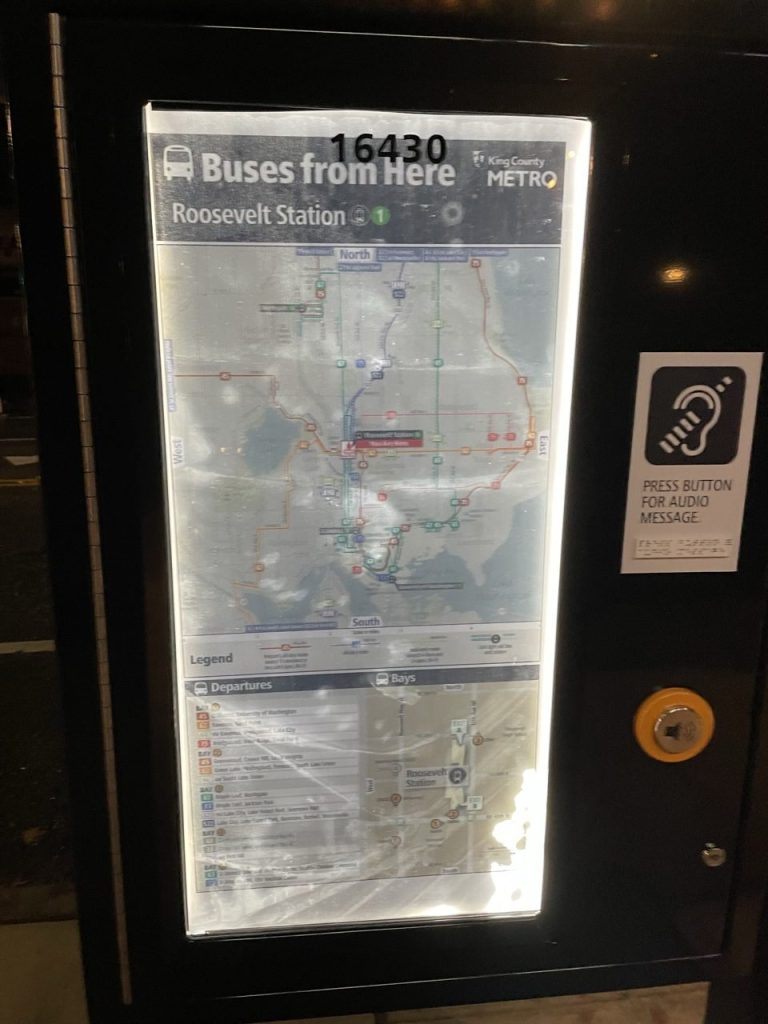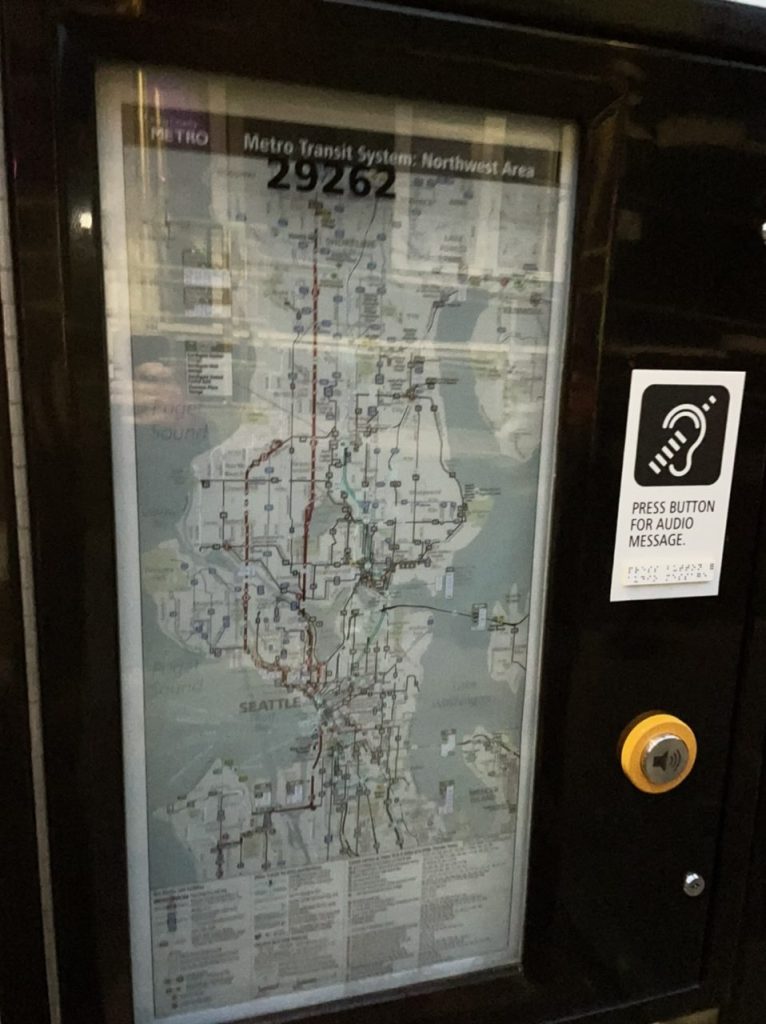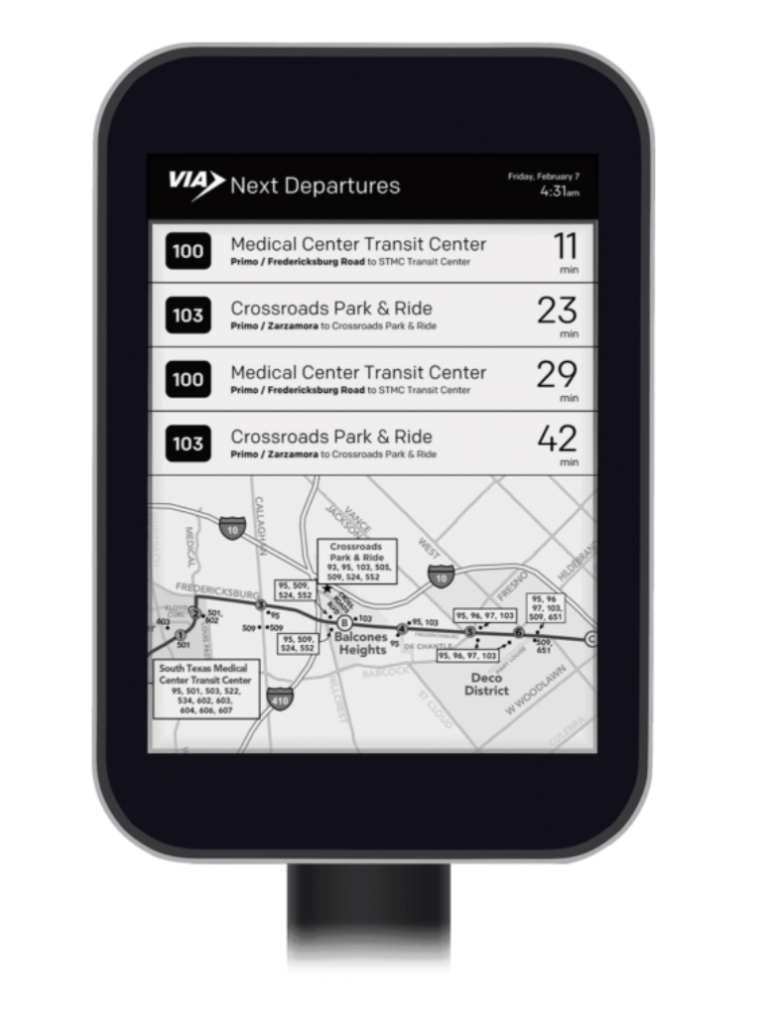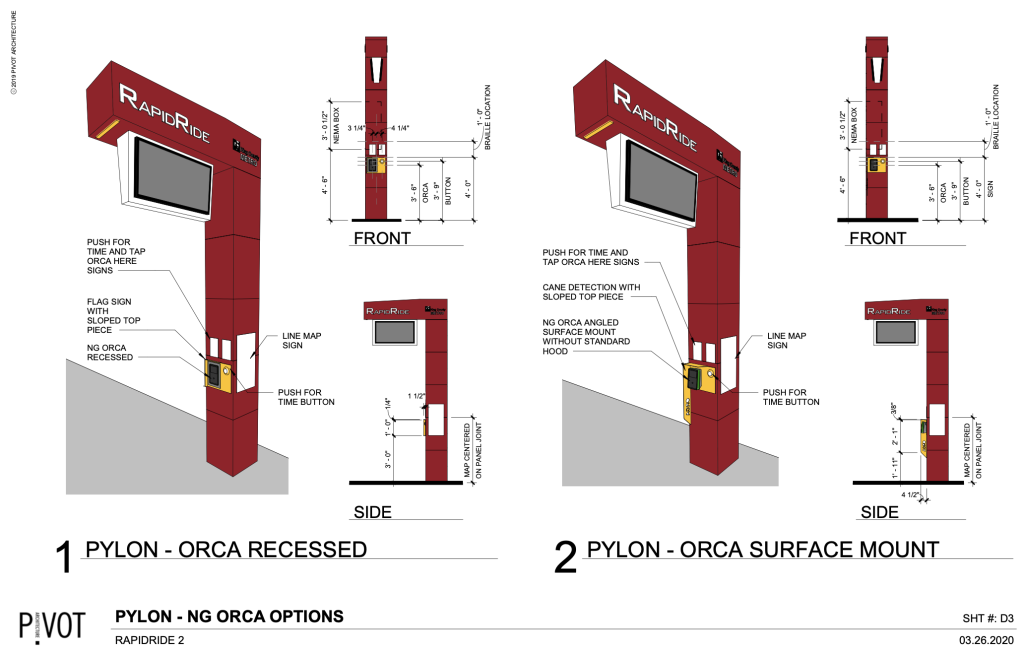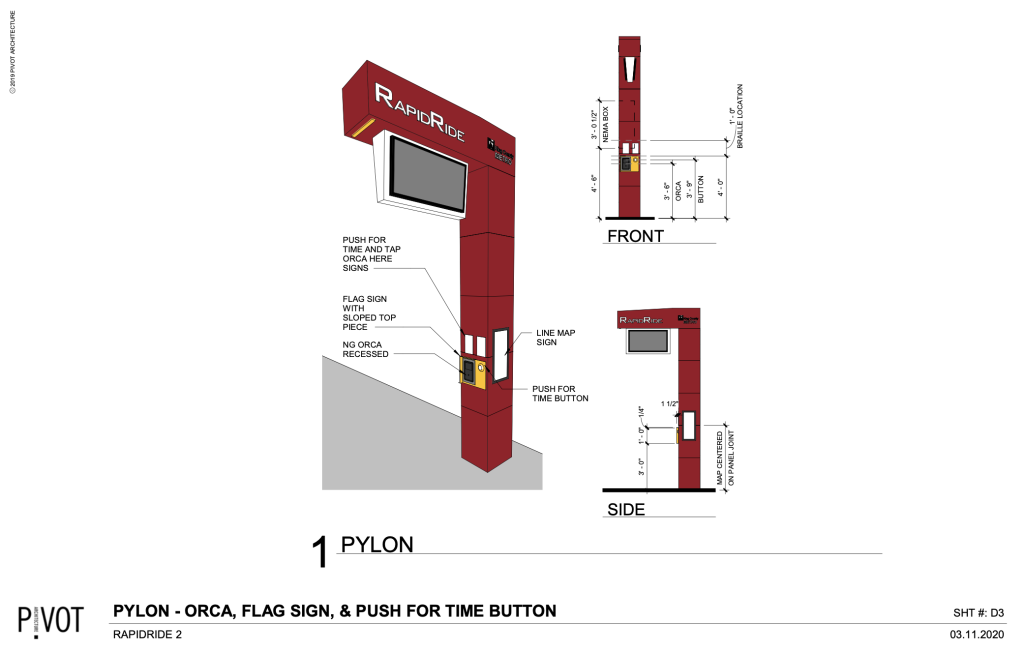Since the start of Northgate Link service this month, King County Metro has brought online a network of new digital real-time information signs (RTIS). The initial batch of signs are located around light rail stations in Northgate, Roosevelt, U District, and Capitol Hill. Metro plans to install more than 340 signs over the next five years as part of a contract with Connectpoint, which specializes in RTIS systems.
In a statement to The Urbanist, Rick Wood, President and Chief Executive Officer of Connectpoint, said that “King County Metro is one of the premier transit agencies in the country” and that “other agencies look to them for ideas and best practices,” alluding to Metro’s track record of innovation and ongoing endeavor to provide better rider tools like the company’s industry-leading e-paper displays. “Connectpoint displays provide crystal clear readability while King County Metro can control them through our cloud-based backend,” he said. Among the direct user benefits, Wood said that the displays would provide riders “with real-time service information and up-to-the-minute real-time service alerts and import community service messages and graphics.”
Where RTIS is being installed and capabilities
As of Monday, Metro has installed new RTIS at 15 locations near four light rail stations in Seattle. Around half of the signs are energized and mostly operating, but seven still needing to be energized and others need final programming. Two other locations still need RTIS to be placed, energized. The map below shows the locations with green indicating energized/operational, orange indicating awaiting energizing and programming, and red indicating awaiting installation, energizing, and programming.
All of the RTIS locations use Connectpoint’s e-paper screen technology. The e-ink displayed on screens provides high contrast allowing it to work well in both dark and bright conditions while reducing glare. The technology also uses materials that are resistant to condensation, corrosion, and vandalism, and provides robust performance during extreme weather events. Assuming that the devices indeed meet the contractual standards, the average life of the screens should be just over 11 years, offering a very long service period before replacement would become necessary.
Each of the signs come with a pole and mast arm, upon which the displays are mounted. With this, Metro has opted to include a box to present local information and a push-to-talk button. The local information comes in two forms: Metro’s new spider maps for buses that depart from stations and Metro’s system maps. The push-to-talk button is an accessibility function, reading out any text on the screen from a built-in speaker. As for the signs, they are double-sided allowing them to be viewable both ways on sidewalks.
Right now, the signs use live data to display real-time arrival information for upcoming Metro, Sound Transit, and Community Transit bus trips — which based upon personal experience seems to be very reliable and accurate. Up to four upcoming trips can be displayed at a time, but additional ones can be shown if the screen is set to cycle through them. Other messages and alerts can be displayed as needed to provide additional information to riders. In addition, the signs come with standard features that are always shown, such as the date, time, and stop number.
According to the Connectpoint contract, the 32-inch and 42-inch screens will be required to show any RapidRide line as “the first bus route on every display.” However, none of the current locations where displays have been deployed have RapidRide lines.
Overall, Metro says that maintenance of the signs is fairly easy. Each of the displays are “hot swappable” devices, which “means they are preconfigured, and they only take a few minutes to replace,” the agency told The Urbanist. Metro also has a warranty guarantee from Connectpoint that could be exercised if needed. Going forward, Metro’s Radio Maintenance team will be responsible for ongoing maintenance of the displays.
Further expansion of signs ahead
Metro has a $7.6 million contract with Connectpoint over the next five years and plans to install many more signs as part of RapidRide projects and other targeted locations as spot improvements. According to the contract, Metro has options for about 630 displays ranging in the three sizes. Most spot improvements should come in the form of 13-inch displays while RapidRide lines get 42-inch displays, the except being the RapidRide G Line which is slated to get 32-inch displays.
By deducting the assumed number of needed spares and discounting the need of two displays per location, Metro should have enough displays for 240 locations using the 32-inch and 42-inch displays and another 100 locations for the 13-inch displays. Of course, the final breakdown of displays to be procured could change over the course of the contract if priorities evolve — and they already have with the pause on the RapidRide K Line late last year.
Eventually, Metro hopes to replace existing RTIS that the Seattle Department of Transportation has installed throughout the city, like on N/NE 45th Street and Rainier Avenue S. A budget request will be put forth in the next biennial cycle for 2023-2024 to fund replacement.
In addition to the 32-inch display model, Metro has options for 13-inch and 42-inch displays. The 13-inch displays would use the same type of technology but be installed at existing flagged bus stop poles. These will be powered by solar panels and have backup batteries; Connectpoint’s technology is highly efficient, making this practical at such a small display size. Conversely, the 42-inch displays will be similar to the 32-inch displays and will be featured as part of Metro’s next generation of RapidRide Tech Pylons.
Cost and revenue opportunities
As for the unit costs, prices range from $3,590 to $17,810 per display, depending upon the size and whether units use ground power or solar power, and larger displays come with an added cost of $850 to $1,080 for mounting brackets. Additionally, push-to-talk buttons each cost another $1,470 and Connectpoint charges initial programming and annual software fees for each sign.
When asked about whether advertising would be included in the signs, Metro said that advertising won’t be used at this time. However, the signs are readily capable of displaying advertising and do in some other transit markets. So the agency could pursue monetization in the future similar to what Sound Transit is planning to do within light rail stations with digital signage. Nevertheless, the program cost is fairly inexpensive and monetization may not be a high priority to fund it.
What is significant though is that rapid rollout of RTIS will offer riders more certainty about when buses will turn up. The quality of the product is much higher than the dot matrix RTIS prevalent throughout the region and evidently very easily deployable. It is undoubtedly a welcome feature to riders and sets a high standard for Metro that should be even more widely implemented than planned.
Stephen is a professional urban planner in Puget Sound with a passion for sustainable, livable, and diverse cities. He is especially interested in how policies, regulations, and programs can promote positive outcomes for communities. With stints in great cities like Bellingham and Cork, Stephen currently lives in Seattle. He primarily covers land use and transportation issues and has been with The Urbanist since 2014.

